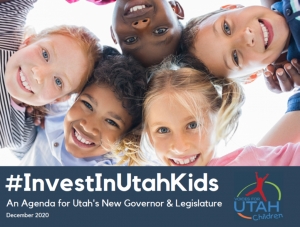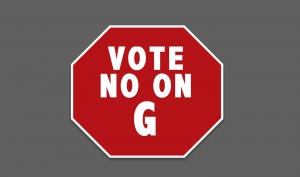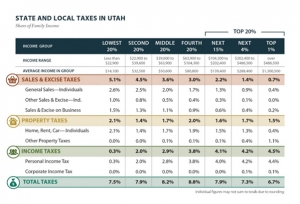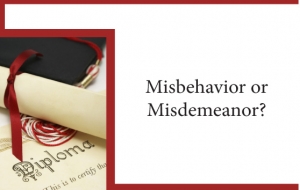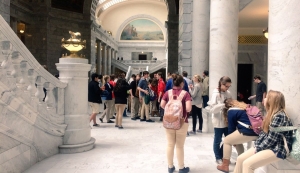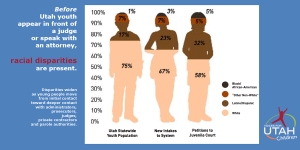Juvenile Justice
#InvestInUtahKids: An Agenda for Utah's New Governor and Legislature
Salt Lake City - Voices for Utah Children released publicly today (January 6, 2021) "#InvestInUtahKids: An Agenda for Utah's New Governor and Legislature," the first major publication of our new #InvestInUtahKids initiative.
Utah begins a new era in this first week of January, with the swearing in of a new Governor and Lt. Governor and a new Legislature. The arrival of 2021 marks the first time in over a decade that the state has seen this kind of leadership transition. Last month Voices for Utah Children began sharing with the Governor-elect and his transition teams the new publication, and on Wednesday morning Voices will share it with the public as well.
The new publication raises concerns about the growing gaps among Utah's different racial, ethnic, and economic groups and lays out the most urgent and effective policies to close those gaps and help all Utah children achieve their full potential in the years to come in five policy areas:
- Early education
- K-12 education
- Healthcare
- Juvenile justice
- Immigrant family justice
The report, which was initially created in December and distributed to the incoming Governor and his transition teams, closes with a discussion of how to pay for the proposed #InvestInUtahKids policy agenda. The pdf of the report can be downloaded here.
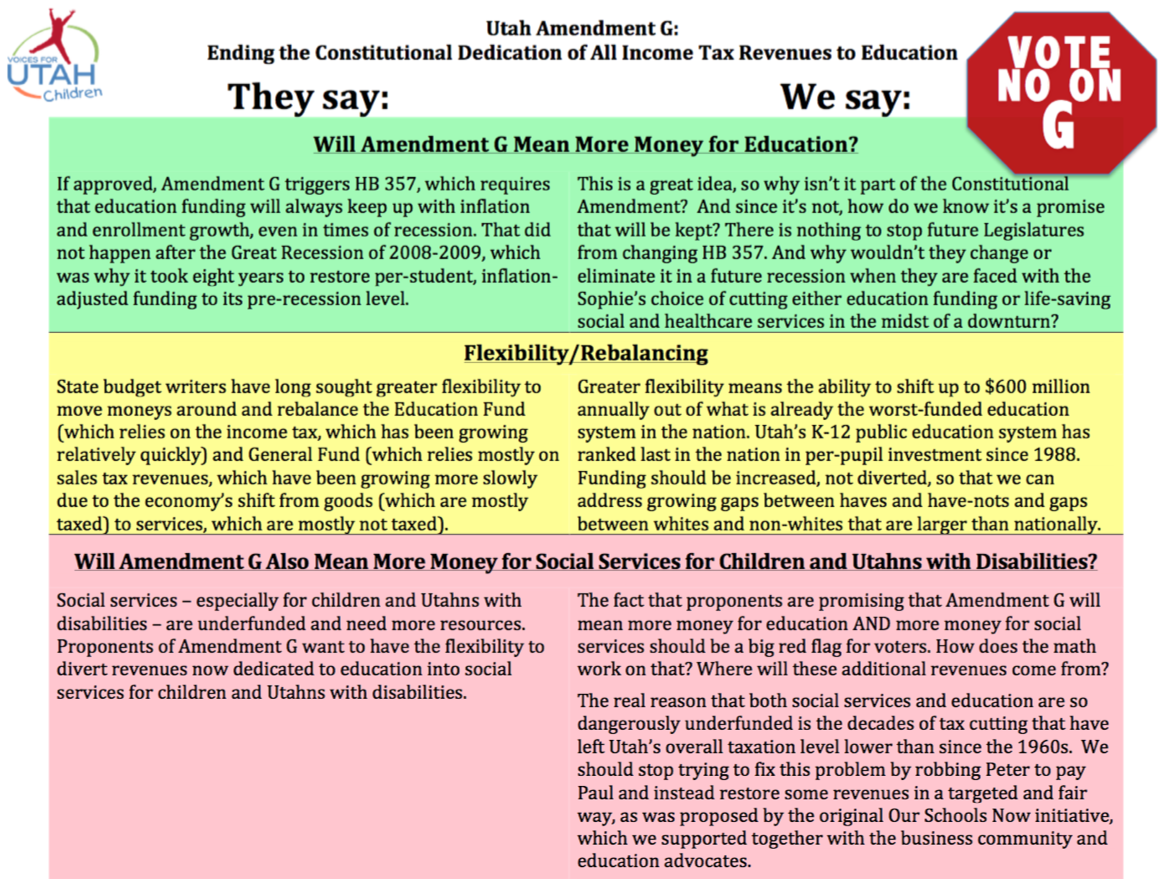
The state's leading child research and advocacy organization Voices for Utah Children announced its opposition to Constitutional Amendment G in an online press conference today (Monday, October 5, 2020).
Constitutional Amendment G is the proposal to amend the Utah State Constitution to end the Constitutional earmark of all income tax revenues for education. Since 1946 Utah has dedicated 100% of income tax revenues to education, initially defined only as K-12 education and, since 1996, including also higher education. The State Legislature voted in March to place on the ballot the question of also allowing these funds to be used for other purposes -- specifically for programs for children and for Utahns with disabilities.
The arguments made by proponents and opponents are summarized in an online document prepared by the state election administrators in the Lt Governor's office. According to that document, "the state spends about $600 million annually of non-income tax money on programs for children and programs that benefit people with a disability."
Voices for Utah Children CEO Maurice "Moe" Hickey explained the organization's decision to oppose the Amendment: "We believe that the proposed Amendment not only won’t solve Utah’s state budget woes, it is likely to delay the real fiscal policy changes that are needed. Over the past decade we have been continuously ranked last in the country for per pupil spending. This is a caused by our growth in number of students, combined with a lowered tax burden in the past decade. A major question we have to ask is “if the current Constitutional earmark has failed to help Utah invest more in education, how will getting rid of it improve matters?” The unfortunate reality is that getting rid of the Constitutional earmark of income tax for education does nothing to solve the real problem, which is the fact that nearly every area of state responsibility where children are impacted – education, social services, public health, and many others – is dangerously underfunded."
Health Policy Analyst Ciriac Alvarez Valle said, "Utah has one of the highest rates of uninsured children in the country at 8% or 82,000 children, and we have an even higher rate of uninsured Latino children at almost 20%. It is alarming that even during this pandemic, children and families are going without health insurance. There are so many ways to reverse this negative trend that began in 2016. Some of the solutions include investing in our kid’s healthcare. By investing in outreach and enrollment efforts especially those that are culturally and linguistically appropriate for our communities of color, we can ensure they are being reached. We also have to invest in policies that keep kids covered all year round and ensures they have no gaps in coverage. and lastly, we have to invest in covering all children regardless of their immigration status. By doing these things we can ensure that kids have a foundation for their long term health and needs. It's vital that we keep children’s health at the forefront of this issue, knowing that kids can only come to school ready to learn if they are able to get the resources they need to be healthy."
Health Policy Analyst Jessie Mandle added, "All kids need to have care and coverage in order to succeed in school. We are no strangers to the funding challenges and the many competing demands of social services funding. Without greater clarity, more detail, and planning, we are left to ask, are we simply moving the funding of children’s health services into another pool, competing with education funding, instead of prioritizing and investing in both critical areas? Sufficient funding for critical children’s services including school nurse, home visiting and early intervention, and school-based preventive care remains a challenge for our state. We have made important strides in recent years for children’s health, recognizing that kids cannot be optimal learners without optimal health. Let’s keep investing, keep moving forward together so that kids can get the education, health and wraparound services they need."
Education Policy Analyst Anna Thomas: "We often hear that UT is dead last in the nation in per pupil funding. We have also heard from such leaders as Envision Utah that millions of dollars are needed to avert an urgent and growing teacher shortage. What we talk about less is the fact that these typical conservative calculations of our state’s underfunding of education don’t include the amount the state should be paying for the full-day kindergarten programming most Utah families want, nor does it include the tens of millions our state has never bothered to spend on preschool programs to ensure all Utah children can start school with the same opportunities to succeed. Utah currently masks this underfunding with dollars from various federal programs, but this federal funding is not equitably available to meet the needs of all Utah children who deserve these critical early interventions. The state also increasingly relies on local communities to make up the difference through growing local tax burdens - which creates an impossible situation for some of our rural school districts, where local property tax will never be able to properly fund early interventions like preschool and full-day kindergarten along with everything else they are responsible for. Our lack of investment in early education is something we pay for, much less efficiently and much less wisely, later down the road, when children drop out of school, experience mental and physical health issues, and get pulled into bad decisions and misconduct. If kids aren’t able to hit certain learning benchmarks in literacy and math by third grade, their struggles in school - and often by extension outside of school - multiply. We should be investing as much as possible in our children to help ensure they have real access to future success - and can contribute to our state's future success. You don’t have to be a math whiz - third grade math is probably plenty - to see that the general arithmetic of Amendment G, and the attendant promises of somehow more investment in everything that helps kids - just doesn’t add up. We have multiple unmet early education investment obligations right now. Beyond that, we have many more needs, for children and for people with disabilities, that we must be sensitive to as a state especially during a global pandemic. How we will ensure we are investing responsibly in our children and our future, by having MORE expenses come out of the same pot of money - which the legislature tells us every year is too small to help all the Utah families we advocate for - is still very unclear to me. Until that math is made transparent to the public, we have to judge Amendment G to be, at best, half-baked in its current incarnation."
Fiscal Policy Analyst Matthew Weinstein shared information from the Tax Commission (see slide #8) showing that Utah's overall level of taxation is now at its lowest level in 50 years relative to Utahns' incomes, following multiple rounds of tax cutting. He also shared recent survey data from the Utah Foundation showing that three-fourths of Utahns oppose cutting taxes further and are ready and willing to contribute more if necessary to help solve the state's current challenges in areas like education, air quality, and transportation. He contrasted the public's understanding that there's no "free lunch" with the unrealistic election-year promises made by our political leadership -- more money for both education and social services if the public votes for Amendment G -- even though Amendment G does nothing to reverse any past tax breaks and address the state's chronic revenue shortages.
The organization shared a one-page summary of the arguments for and against the proposed Constitutional Amendment:

The organization also published a full five-page position paper that is available in pdf format.
Juvenile Justice
Dedicated to creating a more fair and equitable juvenile justice system
Utah’s juvenile justice system has a lot to be proud of. Thanks to legislative and community efforts over the last several years, our system has become smaller, less punitive, and more youth-centered. Youth and their families now have greater access to early interventions that prevent court-involvement, rather than only having access to support and help once misconduct occurs. State and local stakeholders utilize more evidence-based programming, and make decisions driven by data and collaboration.
Equity, however, remains an elusive goal for Utah’s reform efforts. Despite many strong policy reforms, children of color still are overrepresented in our juvenile justice system. This is true from the first point of contact with law enforcement and other authority figures, all the way to secure care adjudications for youth who are deep in the system. Children who identify as LGBTQ+, have disabilities and come from low-income families also struggle to have their needs met within our system.
We want to ensure that all youth have access to interventions and supports that work for them and for their families. These resources should be available early and often, before youth misbehavior becomes dangerous for the youth themselves, as well as for the broader community. Voices for Utah Children is dedicated to promoting policies and recommendations that contribute to a more fair and equitable juvenile justice system for all Utah youth.
While racial and ethnic disparities in the system have always been part of the reform conversation, equitable treatment and representation of all children (regardless of race and/or ethnicity) was not an explicit goal. So, four years later, how has our juvenile justice system improved with regard to equity?
The more pointed question is, has our system improved at all when it comes to the equitable treatment of children of color?
Voices for Utah Children is proud to announce the release of our new report, “Striving for Equity in Utah’s Juvenile Justice System,” an update to a collaborative 2017 report on racial and ethnic disparities in Utah’s juvenile justice system.
Co-authored by policy analysts Ciriac Alvarez Valle and Anna Thomas, “Striving for Equity” shows that while enormous strides have been made in the past four years toward improving Utah’s juvenile justice system, equitable treatment of youth of color remains elusive. While the system overall has shrunk in size - youth arrests, referrals and petitions to court and admissions to locked to detention are all on the decline - youth who identify as Black, Indigenous and People of Color (BIPOC) comprise a growing portion of the court-involved population.
In our writing of this report, we were unsurprised to learn the following: when efforts to achieve equity are not intentional and direct, equitable outcomes remain elusive.
While Utah’s juvenile justice system has decreased in size, overall, disparities between different racial/ethnic groups mostly have gotten worse. For example:
- In 2015, white children made up about 75% of the school-aged youth population in Utah, and only 58% of petitions to juvenile court. In 2019, white children were 74.2% of the general population, and only 51.8% of petitions to juvenile court.
- In 2015, Black children made up slightly more than 1% of the school-aged youth population in Utah - but 5% of all petitions to juvenile court. In 2019, Black children were still close to just 1% of the general population...but made up 6.9% of all petitions to juvenile court.
- In 2019, children of color made up the majority of youth in both locked detention and secure care facilities in Utah. In four years, non-white children grew from 43% of locked detention admissions to nearly 51%, and from a disappointing 54% of the secure care population to a staggering 61.2%.
The report - which uses 2019 data from the Administrative Office of the Courts, the Division of Juvenile Justice Services, the Commission on Criminal and Juvenile Justice and the Bureau of Crime Statistics - also explore state progress on recommendations made in the 2017 report, and makes new recommendations for policymakers and community members to pursue in 2020.
Utah deserves plenty of accolades for juvenile justice system improvements so far; making equity a more explicit goal in the state’s system reform efforts could position Utah’s juvenile justice system as the best in the nation.
Special thanks to the Utah Division of Multicultural Affairs for its support in the development of this report (including layout and design by Ephraim Kum, community engagement intern for the MCA), and also to the Commission on Criminal and Juvenile Justice for its support (specifically from UBJJ/JJOC Co-Directors Kayley Richards and Van Nguyen) in obtaining and clarifying specific data points.
Poverty Advocates Tax Reform Letter
Utah Poverty Advocates Call for Fairer Taxes and Restoration of Public Revenues
Salt Lake City - Today (September 26, 2019) at the Utah State Capitol, a group of two dozen non-profit organizations that provide services to and advocate on behalf of Utah's low- and moderate-income population released a letter to the Tax Restructuring and Equalization Task Force. The letter calls on the Task Force to consider the impact on low-income Utahns as they consider tax changes that could, in the worst case scenario, make Utah's tax structure more regressive and less able to generate the revenues needed to make critically important investments in education, public health, infrastructure, poverty prevention, and other foundations of Utah's future prosperity and success.
The text of the letter and the list of signatories appears below (and is accessible as ![]() a pdf at this link):
a pdf at this link):
Open Letter to the Tax Restructuring and Equalization Task Force (TRETF)
Tax Reforms for Low- and Moderate-Income Utahns
September 2019
Dear Senators, Representatives, and Other Members of the TRETF:
We, the undersigned organizations that work with and advocate for low- and moderate-income Utahns, urge you to consider the impact on the most vulnerable Utahns of any tax policy changes that you propose this year.
We urge you to address the two major challenges facing our tax structure as it impacts lower-income Utahns:
1) Utah’s current system of taxation is regressive, in the sense that it requires lower-income Utahns to pay a higher share of their incomes to state and local government than it asks of the highest-income Utahns, even though about 100,000 lower-income Utah households are forced into – or deeper into – poverty by their tax burden every year.

This regressivity could be addressed with tax policy changes including the following:
- A Utah Earned Income Tax Credit (EITC) to allow the working poor to keep more of what they earn.
- Remove the sales tax entirely from food, as 34 other states have done.
- Remove the state income tax on Social Security benefits for low- and moderate-income seniors; Utah is one of only 13 states that tax these benefits.
- Restore the income tax rate to 5% or increase it above that level. (Because the majority of all Utah income is earned by the top quintile of taxpayers, and because the Utah income tax more closely matches Utah’s income distribution than any other tax, most of such an income tax rate increase would be paid by the top-earning 20% of Utahns, while most lower-income Utahns are shielded from income tax rate increases.)
- Disclose and evaluate the effectiveness of tax expenditures (revenue lost to the taxing system because of tax deductions, exemptions, credits, and exclusions); Utah’s lack of transparency in this area of taxation earned us a C grade from the Volcker Alliance, a leading evaluator of state budgetary practices founded by former Federal Reserve chairman Paul Volcker.
2) For decades, Utah’s overall level of taxation relative to the state’s economy has been dropping, as illustrated in the chart below from the Utah State Tax Commission:

The unfortunate result is that we are left with a tax structure that fails to generate sufficient revenues to allow our state and local governmental entities to properly meet their responsibilities and fulfill their appropriate role in a number of critical areas, including the following:
- Education: Utah ranks last nationally for our per-pupil investment in K-12 education. Particular areas of weakness include:
-
- · Teacher turnover rates are higher than the national average. One study found the majority of new teachers leave within seven years.
- · Pre-K: Utah ranks 36th for our percent of lower-income 3- and 4-year-olds attending pre-school, private or public. We are also 1 of only 7 states not to have statewide public preschool programs. (The state offers only small-scale programs in a limited number of local school districts.) Yet we know from multiple research sources that every dollar invested in high-quality day care and preschools produces at least a $7 return on that investment in future years.
- · Kindergarten: Only a third of Utah kids participate in full-day kindergarten, less than half the national average, because local school districts can’t afford to offer it. Voices for Utah Children estimates that it would cost at least $75 million to offer full-day K to all Utah kids (not including potential capital costs).
- · According to the January 2019 report of the Utah Afterschool Network, the need for after-school programs exceeds the supply many times over, leaving tens of thousands of children completely unsupervised, meaning they are less likely to do their homework and more likely to engage in unsafe activities.
In addition to these input measures, Utah is also lagging behind in terms of several significant educational outcome measures:
-
- · Our high school graduation rates are lower than national averages for nearly every racial and ethnic category, including our two largest, Whites and Latinos.
- · Among Millennials (ages 25-34), our percent of college graduates (BA/BS or higher) lags behind national trends overall and among women.
Moreover, Utah is in the midst of a demographic transformation that is enriching our state immeasurably but also resulting in majority-minority gaps at a scale that is unprecedented in our history. For example, in our education system:
-
- · Our gap between White and Latino high school graduation rates is larger than the national gap.
- · Education Week recently reported that Utah ranks in the worst 10 states for our growing educational achievement gap between haves and have-nots.
- · We are beginning to see concentrations of minority poverty that threaten to give rise to the type of segregation and socio-economic isolation that are common in other parts of the country but that Utah has largely avoided until now.
B. Infrastructure: Utah’s investment has fallen behind by billions of dollars. This is another area where the Volcker Alliance ranked Utah in the worst nine states for failing to track and disclose to the public the dollar value of deferred infrastructure replacement costs. In addition. Internet infrastructure is lacking in some rural counties, limiting their integration into Utah’s fast-growing economy.
C. Mental Health and Drug Treatment: Utah was recently ranked last in the nation for our inability to meet the mental health needs of our communities, according to a recent report from the Kem C. Gardner Policy Institute. Underfunding of drug treatment and mental health services costs taxpayers more in the long run as prison recidivism rates rise because the needed services are not available. Estimates are that Utah meets only 15% of the need for these vital, life-saving services.
D. Affordable housing units fall 41,266 units short of meeting the need for the 64,797 households earning less than $24,600, yet the annual $2.2 million state allocation to the Olene Walker Housing Loan Fund has not changed in over two decades, despite inflation of over 60%. Among extremely low-income renter households, 71% pay more than 50% of their income for housing, which is considered a severe housing burden. This year, the Olene Walker Housing Loan Fund used up most of its annual $14 million budget at its very first meeting of the fiscal year (made up of both state and federal funds).
E. Health care: Our rates of uninsured children are higher than national averages – and rising – especially among the one-in-six of our children who are Latino. In Utah 35,000 or 5% of White children are uninsured (national rank = 36th place), compared to 31,000 or 18% of Latino children (rank = 46th = last place in 2017).
F. Disability services: The 2018 annual report from the Utah Department of Human Services’ Division of Services for People with Disabilities reports that the wait list for disability services grew to a record level of 3,000 individuals last year and that the average time on the wait list is 5.7 years.
G. Seniors: The official poverty measure undercounts senior poverty because it does not consider the impact of out-of-pocket medical expenses. A 2018 study found that seniors spent $5,503 per person on out-of-pocket medical expenses in 2013, making up 41% of their Social Security income. (For most seniors, Social Security is the majority of their income, and it makes up 90% or more of income for 21% of married couples and about 45% of unmarried seniors.)
H. Domestic Violence: Although Utah's overall homicide rate is significantly lower than the national average, domestic-violence-related homicides constitute over 40% of Utah's adult homicides compared to 30% nationally. Several thousand women continue to be turned away annually from crisis shelters because of lack of capacity. Additional state funding would make it possible to substantially increase the capacity of overburdened crisis shelters. We are one of the few states without domestic violence services in every county.
Given the large number of urgent needs that are not being met because of our chronic shortage of public revenues, we are concerned that Utah is missing the opportunity to make critically important upfront investments now that would allow us to reap substantial rewards in the future, and that our most vulnerable neighbors will pay the greatest price as a result.
Thus, we urge you to consider the ways that the state tax structure impacts single parents, disabled adults, low-income children, seniors on fixed incomes, and other vulnerable population groups as you decide on your tax restructuring and equalization proposals.
Finally, thank you for all the time and effort you are personally investing as volunteer members of this important Task Force, and for all that you do for our state through this and other forms of public service.
Yours truly,
|
American Academy of Pediatrics Utah Chap. Catholic Diocese of Salt Lake City Coalition of Religious Communities Community Action Program of Utah Community Development Finance Alliance Community Rebuild |
Comunidades Unidas Crossroads Urban Center Epicenter First Step House League of Women Voters Utah Legislative Coalition for People with Disabilities ICAST Habitat for Humanity of Southwest Utah |
Moab Area Hsg Task Force Provo Housing Authority RESULTS Utah Rocky Mountain CRC Self-Help Homes, Provo, UT Utah Citizens’ Counsel Utah Coalition of Manufactured Homeowners Utah Community Action Utah Food Bank Utah Housing Coalition Utahns Against Hunger Voices for Utah Children |
The Justice & Equality for Kids (JE4K) Rountable developed the ![]() Community Compact on Restorative Justice to bring integrity and focus to ongoing efforts to make our schools safer, our juvenile justice system more effective and compassionate, and our communities healthier.
Community Compact on Restorative Justice to bring integrity and focus to ongoing efforts to make our schools safer, our juvenile justice system more effective and compassionate, and our communities healthier.
Utahns have heard more and more about Restorative Justice over the past decade, sometimes in legislative proposals - such as this excellent offering by Rep. Sandra Hollins (R-Salt Lake) - and sometimes as part of discussions of about school-based discipline - such as this less instructive definition within the Utah State Board of Education's administative rules (R277-613-2.10). The term has been mentioned frequently in discussions about the appropriate role of School Resource Officers (SROs) practicing in Utah, as well as during the extensive juvenile justice reform process initiated by state leaders back in 2016.
Unfortunately, once a complex and deep-rooted philosophy becomes a buzzword, things can get a little hazy with regards to principles and definitions! But Restorative Justice does have a specific definition, grounded in historical pratice by indigenous cultures and built upon several key interrelated principles. The Community Compact on Restorative Justice is our iteration of that definition, developed in partnership with local Restorative Justice practitioners. It is an honest effort, by multiple community stakeholders, to assert that you can't just slap a "Restorative Justice" label on a random diversion program, and expect it to produce the positive results that are associated with the practice of this philosophy.
If you prefer to add an audiovisual element to your review of the Community Compact on Restorative Justice, JE4K Roundtable members unveiled the Compact for the first time at the Fourth Annual Breaking the Pipeline Symposium in March, hosted by fellow JE4K Roundatble member organization, Racially Just Utah. Here is a link to the livestreamed event, with discussion of the Community Compact on Restorative Justice beginning around the 39:09 minute mark.
It is hard to define Restorative Justice in a linear fashion, in a way that fits neatly into a slogan or list of bullet points. That is because the philosophy was not conceived in a linear way, and not developed by cultures that communicate in slogans or bullet points. That is why our Community Compact on Restorative Justice works together with a few simplified graphics, that stress the multi-dimensional nature of the approach. Below is the first and most foundational of the three graphics. The ![]() second graphic and
second graphic and ![]() third graphic demonstrate the practical application of these principles in an education and a juvenile justice setting, respectively.
third graphic demonstrate the practical application of these principles in an education and a juvenile justice setting, respectively.
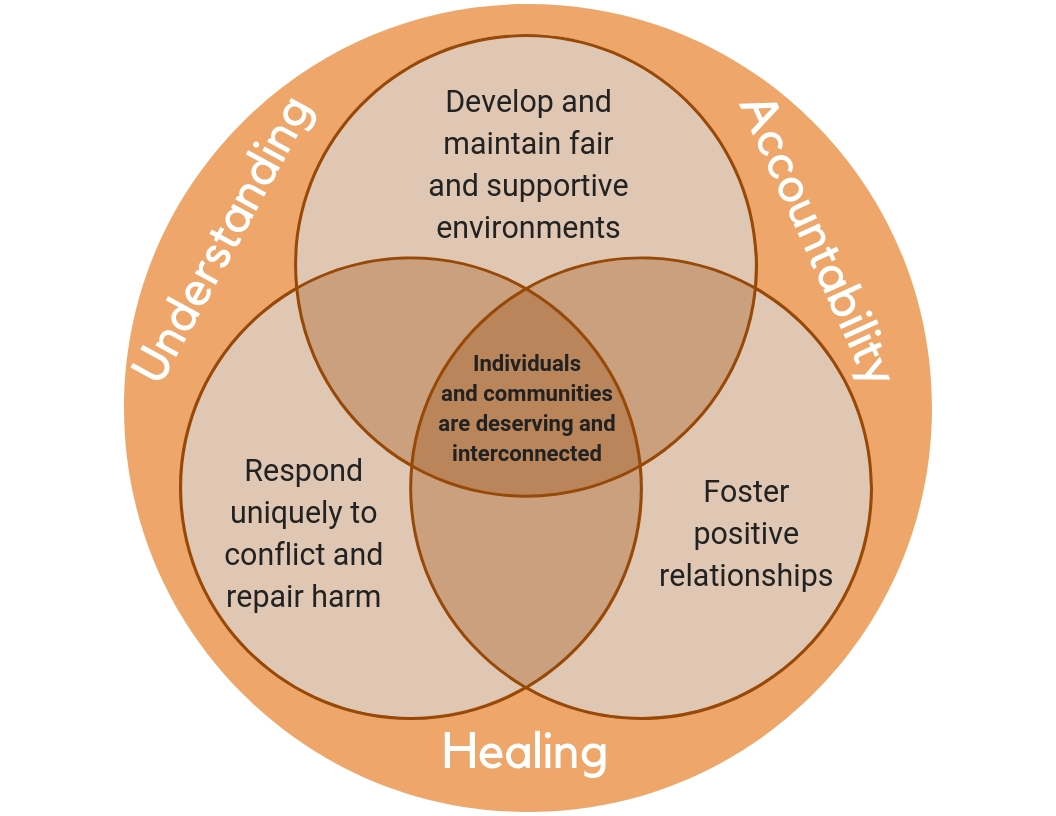
So far, several organizations have signed on to the Community Compact on Restorative Justice - including the following members of our JE4K Roundtable:
- Voices for Utah Children (of course!),
- Journey of Hope,
- Ogden Branch NAACP,
- Utah Juvenile Defender Attorneys,
- Restorative Justice Collaborative of Utah,
- Disability Law Center,
- YWCA of Utah,
- ACLU of Utah,
- Mountain Mediation Center, and
- Racially Just Utah.
We would like your organization to join us on this list, and commit to holding restorative justice programs in our state to this standard. Your participation will also signal your organization's intention and commitment to practicing restorative justice in a manner that is based on this understanding of Restorative Justice. Our intent is to share this definition of Restorative Justice with governmental and community partners, toward the end of pushing policy in the direction of a more restorative framework.
For example, as we take part in policy conversations about "school safety" in the era of Parkland, Newtown and Santa Fe, we will continually point our stakeholder/partners to the underlying principles in this definition. That means a successful approach to school safety - if it truly aspires to be restorative - must be primarily preventative, relationship-based and encompassing of the whole school community. "Solutions" that focus only on emergency drills, mobilizing law enforcement, high-tech gadgetry and threat assessments cannot claim to be restorative, and will not lead to the positive outcomes associated with Restorative Justice practices (one of those positive outcomes being safe schools!). These approaches, when utilized, can and should be grounded in Restorative Justice principles, in order to ensure prevention of future problems rather than simply mitigation of current ones.
Restorative Justice |
NOT Restorative Justice |
| A values-based approach to building trust, strengthening relationships and resolving conflict. | A discretely-packaged program with a defined curriculum that will work in any setting, from school to prison. |
| A philosophy with deep roots in many indigenous cultures, with broad practical application. | A cool new idea, created by modern professionals and espoused only by bleeding heart liberals. |
| Practices are primarily preventative and can be easily integrated into other activities. | Practices are only employed after harm has been caused and all "traditional" solutions exhausted. |
| Example: Law enforcement officers and administrators meet regularly with community members to discuss neighborhood needs and issues. | Example: City officials hold an annual Town Hall where frustrated and angry community members sit in a circle and vent their frustrations at members of the local police department, who are forced to attend and listen. |
| Example: Bringing a group of students together to check in about their day before beginning the lesson. | Example: Forcing a student who has bullied a peer to apologize, then sit with the bullied student at lunch for a month to "get to know her." |
Restorative Justice is harder to explain than an active shooter drill or counseling program. It requires more than the hiring of a few new staff people, or the implementation of a new curriculum. It is not a quick fix, but it is a research-supported and fruitful investment in our community's health, prosperity and safety. This approach is worth the investment of time and intention, and we will continue to champion its principles in Utah's education, justice, and community landscapes in order to achieve the best possible outcomes for Utah kids.
To add your organization's name to this Compact, please contact the JE4K Roundtable via .
Report: Utah children face barriers to accessing defense attorneys
FOR IMMEDIATE RELEASE: January 31, 2019
CONTACT: Anna Thomas, Senior Policy Analyst, , (720) 275-1557
Report: Utah children face barriers to accessing defense attorneys in juvenile court system
“And Justice For All Kids: A Children’s Right to ‘The Guiding Hand of Counsel’ and the State of Defense Representation for Children In Utah’s Juvenile Courts,” gives recommendations to improve outcomes for children appearing in court.
Jan. 31, 2019 — A new report by Voices for Utah Children and the University of Utah S.J. Quinney College of Law released today outlines startling concerns about youth access to defense attorneys in Utah’s juvenile courts system.
And Justice For All Kidsnotes several barriers youth face in access to full legal representation when appearing in juvenile court a number of negative outcomes associated with insufficient legal defense counsel in juvenile courts.
The report shares several key findings, including:
- Young people who appear in juvenile court in rural counties don’t have the same access to full legal representation as youth in urban counties;
- Young people face practical and procedural barriers to exercising their right to be represented by a defense attorney at court hearings, even at detention hearings when their liberty is at stake; and
- Utah juvenile court judges overwhelmingly support a system that provides an attorney for every youth appearing in their courtrooms, from initial proceedings until termination of jurisdiction.
There are also several recommendations made in the report, with the intent of strengthening Utah’s juvenile defense system. One key recommendation is to pass legislation currently proposed by Sen. Todd Weiler (R-Woods Cross), “SB32, Indigent Defense Act Amendments,” during the 2019 session.
S.J. Quinney College of Law students, supported by staff from Voices for Utah Children, observed nearly 200 court proceedings in almost all Utah counties, and conducted interviews with twenty of Utah’s 30 sitting juvenile court judges, to inform And Justice For All Kids.
![]() The full report is available for download here.
The full report is available for download here.
For a free print copy, contact Voices for Utah Children at (801) 364-1182.
###
School disciplinary actions are decreasing in Utah’s public school system, but disparities in the amount of discipline administered along racial lines continues to exist and in some cases has worsened, according to a new joint report released today by the University of Utah S.J. Quinney College of Law and Voices for Utah Children, a non-profit in Salt Lake City focused on children’s issues.
The report, Misbehavior or Misdemeanor? A Report on the Utah’s School to Prison Pipeline, builds on two earlier reports produced by the S.J. Quinney College of Law Public Policy Clinic focused on the current state of Utah’s school-to-prison pipeline. In October 2014, the clinic released “From Fingerpaint to Fingerprints: The School to Prison Pipeline in Utah” and in May 2015, the clinic released “Disparities in Discipline: A Look at School Disciplinary Actions for Utah’s American Indian Students”.
In the newest report, researcher Vanessa Walsh, a 2016 S.J. Quinney College of Law graduate now employed with Salt Lake County’s Criminal Justice Advisory Council, teamed up with Lincoln Nehring, director of the S.J. Quinney College of Law’s Public Policy Clinic and CEO of Voices for Utah Children, to explore how trends have shifted in school discipline since the publication of the earlier reports.
The duo found that while Utah saw nearly a 30 percent reduction in school disciplinary actions from the 2011-12 school year to the 2013-14 school year (the most recent data available), discipline rates of students who are racial minorities are still elevated in comparison to white peers. “The worsening disparity among racial lines remains troubling,” said Nehring.
The newest report also found:
● In the 2013-2014 school year, almost 9 percent of black students, 8.5 percent of American Indian students, and approximately 5 percent of Pacific Islander and Hispanic students received a suspension. In comparison, only slightly more than 2 percent of white students were suspended.
● In the 2011–12 school year, Hispanic students were 1.3 times more likely than white students to be expelled. This increased to 2.3 times more likely in 2013–14. Asian students were less likely than white students to be expelled in 2011, but they were 3.3 times more likely to be expelled in the 2013-14.
● During the 2013–14 school year, 1.5 percent of American Indian students and almost 1.2 percent of black students were referred to law enforcement. In comparison, less than one half of one percent (0.4 percent) of white students received this action
● American Indian students were 6.2 times more likely than white classmates to be arrested at school in the 2011–12 school year. That disparity increased to 8.8 times more likely in the 2013–14 school year. Similarly, students who identified as Pacific Islander were 1.7 times more likely to be arrested at school in 2011–12 and 3.3 times more likely in 2013–14.
● American Indian student feel the brunt of school disciplinary actions in every category except in-school suspensions, researchers found. Overall,10.3 percent of all American Indian students received some sort of school disciplinary action in the 2013–14 school year. In comparison, 5.6 percent of all other students of color received an action, and 2.6 percent of the white student population received an action.
“Fewer students are being exposed to the juvenile justice system as a result of referrals to law enforcement while at school and school related arrests but as was the case in 2011-12, our American Indian students continue to disproportionately receive these actions,” said Walsh. “These actions directly expose students to the justice system and can leave these students with a juvenile record.”
The researchers will continue to track school discipline rates as part of their ongoing efforts to study the school-to-prison pipeline.
View full report: ![]() Misbehavior or Misdemeanor? A Report on the Utah’s School to Prison Pipeline
Misbehavior or Misdemeanor? A Report on the Utah’s School to Prison Pipeline
For 30 years now, Voices for Utah Children has called on our state, federal and local leaders to put children’s needs first. But the work is not done. The children of 30 years ago now have children of their own. Too many of these children are growing up in poverty, without access to healthcare or quality educational opportunities.
How can you be involved?
Make a tax-deductible donation to Voices for Utah Children—or join our Network with a monthly donation of $20 or more. Network membership includes complimentary admission to Network events with food, socializing, and opportunity to meet child advocacy experts. And don't forget to join our listserv to stay informed!
We look forward to the future of Voices for Utah Children and we hope you will be a part of our next 30 years.
Special thanks to American Express, our "Making a Difference All Year Long" sponsor. 
Wins for Kids during the 2017 Utah Legislative Session
Early Childhood
Wins for new moms and babies including much-needed funding support for Early Intervention Services/Baby Watch (Sen. Luz Escamilla, D-Salt Lake City, SB 2) and SB 135 which will strengthen statewide, evidence-based home visiting programs for low-income mothers (Sen. Escamilla).
SB 100 (Sen. Ann Millner, R-Ogden) commissions an analysis of early childhood systems throughout the state, to determine where and to what extent early childhood services exist such as developmental screenings, home visiting, high-quality child care and preschool, as well as what access barriers there are between these services and the children and families who need them.
Access to Healthcare
A win for families is HB 278 (Rep. Chavez-Houck, D- Salt Lake City), which makes it easier for divorced parents to seek medical care for their children. It requires medical providers to separately bill each parent for their due portion, and prohibits a parent from getting a negative credit report if the other parent has not made his or her portion. The onus is no longer on the parent to track down the full payment or risk a bad credit score. HB 278 will help more kids get the care they need.
Sen. Christensen (R-Ogden) sponsored SB 51, which would return Medicaid managed care services to a fee for service model. Ultimately, this bill was decided outside of legislation, however, the agreement reached will help more children access a Medicaid pediatric dentist or school-based preventive dental care. To further monitor the issue, Sen. Escamilla (D-Salt Lake City) sponsored intent language that directs the Department of Health to investigate pediatric dental care access issues kids enrolled in Medicaid may experience (SB 2).
Immunization
Rep. Thurston’s (R- Provo) bill HB 308 which will strengthen protections for Utah students against disease outbreaks and standardize vaccination exemption requirements and procedures, creating an online education module for those seeking an exemption.
Suicide Prevention
Lawmakers took several key steps toward addressing bullying, student safety and teen suicide in Utah. Sen. Escamilla (D-Salt Lake City) sponsored SB 161, which strengthens school anti-bullying policies, and gives parents and school staff greater ability to address anti-bullying behavior.
Rep. Eliason (R-Sandy), who was also the floor sponsor for SB 161, sponsored HB 223 which establishes a suicide prevention education program, including firearm safety curriculum to be made available in schools.
A big win this session for Utah kids is the repeal of the so-called “No Promo Homo” in SB 196. Previously schools were not allowed to discuss homosexuality in the classroom and curricula. This harmful and discriminatory policy was repealed thanks to the efforts of Sen. Stuart Adams (R-Layton), champions at Equality Utah and others for create a safer, creating more inclusive environment for Utah kids.
Juvenile Justice
For the last year, the state policy makers have been grappling with how to make Utah’s juvenile justice system work better for kids and our community. With the help of the Pew Charitable Trusts, a workgroup made up of key stakeholders—judges, mental health providers, police officers, school officials, prosecutors, and juvenile defense attorneys—made a number of strong recommendations including:
- Keeping kids out of court for low-level status offenses like truancy.
- Bringing much-needed structure to the sentencing process in the juvenile justice system.
- Ensuring that kids don't spend time in detention just because they can't pay restitutions and fines.
- Creating specific performance requirements for community placement programs.
- Ensuring that children have their constitutionally guaranteed right to counsel.
HB 239, Juvenile Justice Amendments, sponsored by Rep. Lowry Snow (R-St. George), incorporated many of these recommendations and received near unanimous support this legislative session. The bill that finally will bring much-needed structure to juvenile sentencing, and require important training for system workers. However, the legislature failed to provide sufficient funding to ensure kids have access to community-based and school-based interventions that offer more opportunities for positive change and that Utah is meeting its constitutional obligation that kids have legal representation.
The passage of SB 134, Indigent Defense Commission Amendments, sponsored by Sen. Todd Weiler (R-Salt Lake), may provide a forum to address the lack of legal representation for kids involved in juvenile justice system by expanding Utah’s Indigent Defense Commission’s mission to include looking at how Utah will protect children’s Sixth Amendment rights, not just adults.
Public Education
For decades Utah has languished at the bottom in terms of state investment in our kids. While big reforms inspired by the Our Schools Now initiative did not make it through in 2017 (The Our Schools Now ballot initiative, however, remains very much alive), the legislature did take a number of positive steps.
As a result of higher-than-expected revenue projections, the Public Education Appropriations Subcommittee recommended a 3 percent increase to the value of the weighted pupil unit (WPU) — the basic unit of education funding — as well as $68 million for new growth in the state’s public education system.
HB 168 (Rep. Lowry Snow, R-St. George) appropriates just under $3 million in TANF funds to help schools establish kindergarten supplemental enrichment programs (extended-day kindergarten). Schools with at least 10 percent of their students experiencing intergenerational poverty will receive first priority for funding, followed by schools in which 50 percent of students are eligible for free or reduced-price lunch. The bill also directs the State Board of Education to develop kindergarten entry and exit assessments to be used in conjunction with these programs.
HB 212 (Rep. Mike Winder, R-West Valley) provides bonuses for teachers working in high-poverty schools who have a 70 percent median growth percentile or higher (as determined by SAGE scores). The state and the school district will each provide half of the bonus funds. While there are concerns about the limitations imposed as a result of using SAGE scores as the sole determinant, it is nonetheless a good step toward incentivizing highly effective educators who work in high-need schools. The bill passed the Senate unanimously and now goes to the Governor.
SB 34 (Sen. Ann Millner, R-Ogden) authorizes the State Board of Education to reimburse a local education agency that provides competency-based education for a student who graduates early. In the past, school districts and LEAs lost the remaining per-pupil funding each time a student graduated before the end of their senior year. The bill passed the House unanimously and now goes to Governor Herbert.
 March 30, 2017 is Love UT Give UT!
March 30, 2017 is Love UT Give UT!
It’s a day for Utahns to give to the nonprofits that make Utah special. Every donation to Voices for Utah Children through Love UT Give UT gives Voices a chance to win matching grants and prizes—and gives you a chance to win a car!
And you don't have to wait! Donate now at http://bit.ly/loveUTchildren.
For 30 years now, Voices for Utah Children has called on our state, federal and local leaders to put children’s needs first. But the work is not done. The children of 30 years ago now have children of their own. Too many of these children are growing up in poverty, without access to healthcare or quality educational opportunities.
How can you be involved?
Make a tax-deductible donation to Voices for Utah Children—or join our Network with a monthly donation of $20 or more. Network membership includes complimentary admission to Network events with food, socializing, and opportunity to meet child advocacy experts. And don't forget to join our listserv to stay informed!
We look forward to the future of Voices for Utah Children and we hope you will be a part of our next 30 years.
Special thanks to American Express for sponsoring our 30th Anniversary Year. 
Let's end racial disparities in Utah's juvenile justice system.
Like most juvenile justice systems across the country, Utah's juvenile justice system could do more to produce the outcomes that we all want for our kids and communities. Our system should be restructured to more effectively ensure that as many kids as possible can stay in their homes and in their schools, instead of being detained in environments that don't lead to justice or positive change.
Voices for Utah Children, in partnership with multiple community stakeholders - including the the ACLU of Utah, YWCA of Utah, Racially Just Utah and Ogden Branch NAACP – has released a new report detailing serious racial disparities in Utah’s Juvenile Justice System.
Using data collected and compiled by an official Juvenile Justice Working Group, and assisted by the Pew Charitable Trust, the report reveals stark racial disparities including the following:
- Black/African-American youth make up 1% of Utah’s youth population, but they represent 12% of all kids placed with the Utah Division of Child and Family Services through the juvenile justice system.
- In one judicial district, Latino/Hispanic youth make up 24% of the youth population - but 52% of all “secure care” dispositions resulting in out-of-home detention for these youth.
- In another district, Native American youth make up 9% of the overall youth population, yet 41% of “secure care” disposition are imposed on Native American youth.
The report offers five recommendations to reduce racial disparities in Utah's juvenile justice system:
- Pass, and implement with fidelity, legislation based on the robust recommendations of the Juvenile Justice Working Group.
- Adopt a comprehensive, youth-centric vision for Utah’s Juvenile Justice system.
- End unnecessary referrals of youth from schools into the juvenile justice system.
- End the practice of tracking youth in undisclosed, non-transparent law enforcement databases.
- Empower and invigorate Utah’s Disproportionate Minority Contact Subcommittee to reduce racial disparities in the juvenile justice system.
Read the full report:
![]() Racial Disparities in Utah’s Juvenile Justice System
Racial Disparities in Utah’s Juvenile Justice System
Take Action Today!
Ask your legislator to support H.B. 239, Juvenile Justice Amendments, sponsored by Rep. Lowry Snow and Sen. Todd Weiler. This bill would offer some common-sense reforms to Utah's juvenile justice system including:
- Keeping kids out of court for low-level status offenses like truancy.
- Bringing much-needed structure to the sentencing process in the juvenile justice system.
- Ensuring that kids don't spend time in detention just because they can't pay restitutions and fines.
- Creating specific performance requirements for community placement programs.
Overall, this bill will bring much-needed structure to juvenile sentencing, and require important training for system workers. Young people, who might in the past have been inappropriately sent into juvenile court, will now have access to community-based and school-based interventions that offer more opportunities for positive change.
It is time to begin systemic reform to address these issues.
Use this simple form to tell your legislator to support H.B. 239
Juvenile Justice Amendments
For 30 years now, Voices for Utah Children has called on our state, federal and local leaders to put children’s needs first. But the work is not done. The children of 30 years ago now have children of their own. Too many of these children are growing up in poverty, without access to healthcare or quality educational opportunities.
How can you be involved?
Make a tax-deductible donation to Voices for Utah Children—or join our Network with a monthly donation of $20 or more. Network membership includes complimentary admission to Network events with food, socializing, and opportunity to meet child advocacy experts. And don't forget to join our listserv to stay informed!
We look forward to the future of Voices for Utah Children and we hope you will be a part of our next 30 years.
Special thanks to American Express, our "Making a Difference All Year Long" sponsor. 

